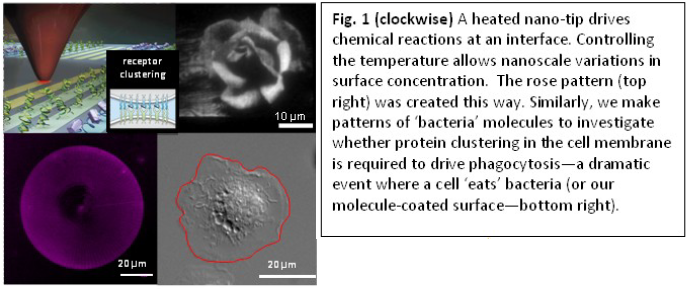Life and Death at the Interface (.PDF)
Controlling physical and chemical features on the nanoscale is crucial for devices based on nanotechnology as well for basic science. At Georgia Tech, we have made key breakthroughs in the controlled production of materials for nanoscience. These are (i) ‘continuous tone’ patterning of surface molecular concentration at the nanometer scale and (ii) force measurement using active nanostructures. We apply these technologies to fundamental problems in cellular biophysics: (i) Using molecular-concentration nanopatterning sophisticated designs can be made (e.g., Fig. 1, top right). For studies of cell-surface interactions, patterned interfaces of varying concentration (Fig. 1, bottom left) are used to probe the role of protein clustering in the initiation of the classical immune response, phagocytosis. (ii) Nanopillars made from a piezoelectric material are used to convert
forces exerted by small groups of molecules in the cell membrane into
electric signals. This enables the measurement of cell forces and
mechanics on a molecular scale.
